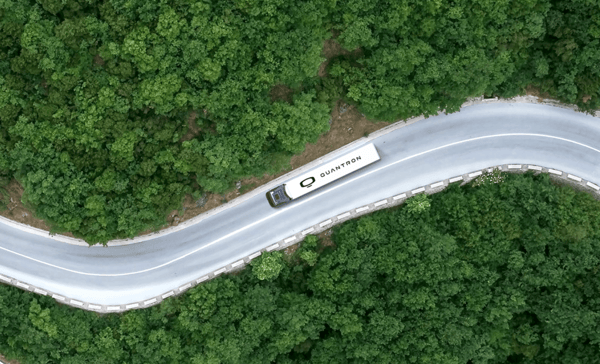Quantron adds Green Hydrogen Technology, UNIWASTEC and Plagazi to Clean Transportation Alliance
Quantron has added Green Hydrogen Technology (GHT), UNIWASTEC and Plagazi to the Clean Transportation Alliance.
The new partners are clean-tech enterprises specialising in waste-to-hydrogen technology that produce green hydrogen from a wide range of waste materials. The clean energy source will be used to decarbonise the transport and logistics sector for Quantron-as-a-Service (QaaS) customers throughout Europe.
All three new partners produce green hydrogen from various waste materials such as municipal and industrial waste (UNIWASTEC), sewage sludge and plastic waste (GHT) as well as non-recyclable materials (Plagazi).
UNIWASTEC produces green electricity through thermolytic conversion of municipal and industrial waste. This energy is fed into a patented process that uses sea or waste water to produce highly purified, climate-neutral hydrogen. The technology does not require precious drinking water and requires significantly less energy than conventional electrolysis processes.
Urs Pelizzoni, CEO of UNIWASTEC, said the future of transport is carbon neutral and includes new, smarter energy sources and together with Quantron, it is now able to offer customers an end-to-end solution while simultaneously realising its shared vision of a carbon-neutral green future.
Green Hydrogen Technology (GHT) has developed an innovative process for generating green hydrogen without using fossil fuels. The production plant can be adapted to accommodate the available resources and produces H2 through a three-stage process using sewage sludge, plastic and wood waste as raw materials.
Robert Nave, CEO of GHT, said, “Energy transition is a team sport. Our technology allows cost-effective production of green hydrogen – and with such production capacities, which means many QaaS trucks can be powered with it in the future. At the same time, GHT production facilities can be supplied with these trucks in a climate-neutral manner. This is how we envision the circular economy.”
Plagazi has a patented Swedish technology that converts non-recyclable waste such as auto-shredder-residue, contaminated plastics, wind turbine blades, industrial waste, hazardous waste or difficult biomass into green hydrogen via plasma gasification at a highly competitive production cost.
Torsten Granberg, CEO of Plagazi, said establishing a strategic cooperation agreement creates a promising outlook on the future of sustainable, zero-emission road transport in Europe as well and its synergy with waste-to-hydrogen as a hydrogen-supplying technology.
Decentralised hydrogen production is not dependent on a complex distribution infrastructure. The production facilities are suitable, among other things, for use in on-site hydrogen production at industrial applications, waste disposal companies and energy suppliers.
These businesses are usually located in logistically advantageous locations for the transport sector so that the obstacles and costs usually associated with storing and transporting the fuel can be avoided as far as possible. In the ideal case, the Hydrogen is consumed directly at the production site and –amongst other applications- directly filled into the tanks of Quantron trucks.
Michael Perschke, CEO of Quantron, said for the decarbonisation of the transport sector, the fuel cell drive is the decisive technology in heavy-duty transport for long distances.
He said, “However, a filling station network must also be in place to ensure a reliable supply of hydrogen. With GHT, UNIWASTEC and Plagazi, we have found three partners who will support us in establishing a decentralised infrastructure for green hydrogen for our sustainable mobility concepts in Europe.”

